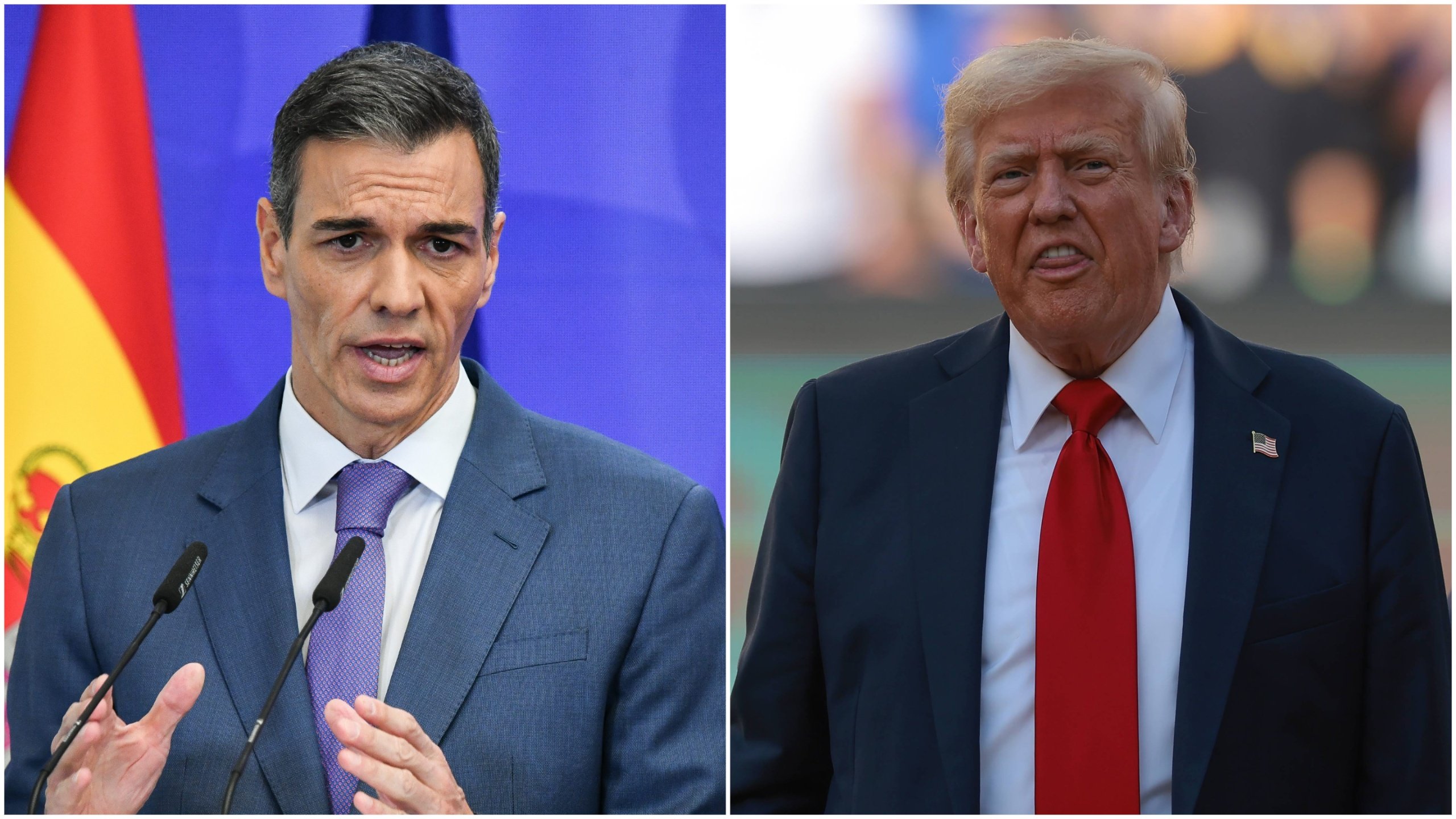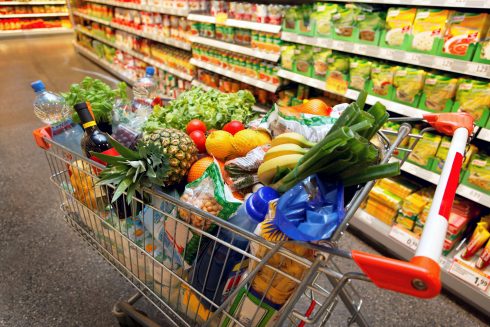FOUR months since President Trump unleashed a tariff blitz that sent shockwaves through the global economy and upended decades of trade diplomacy, the US and EU have finally put pen-to-paper on a new trade deal.
European Commission chief Ursula von der Leyen echoed Trump’s rhetoric at the US president’s Turnberry golf resort in Scotland on Sunday, declaring the agreement a ‘big deal, huge deal’ that would bring ‘stability’ and ‘predictability’.
But how will the new deal impact Spain’s dynamic economy, which continues to buck the global trend with news of its eighth consecutive quarterly growth of 0.6% or more hot off the press?
What’s in the deal?
Hailed by Trump as ‘the biggest deal ever struck by anybody’, the agreement is the result of months of tense negotiations as European officials desperately sought to avoid a damaging trade war with its largest trading partner.
The headline from the so-called Turnberry Accord was the imposition of a blanket 15% tariff rate on EU exports to the US, half the level demanded by Trump just three weeks ago.
The deal is similar to a bilateral agreement struck with Japan – but worse than the 10% general tariff rate agreed between the US and UK three months ago.
READ MORE: Trump slams ‘terrible’ Spain and threatens to ‘make them pay double’ over NATO 5% of GDP snub

A 50% tariff will also remain on steel exports in a blow to the industry, although a range of sectors will remain levy-free, von der Leyen said, including ‘all aircraft and component parts, certain chemicals, certain generics, semiconductor equipment, certain agricultural products, natural resources and critical raw materials’.
Under the terms of the deal, Brussels will spend an additional €650 billion on American energy products such as oil, gas, nuclear fuel and semi-conductors, including liquified gas.
At the same time, the bloc is committed to investing over €500 billion into the US, including military equipment.
The deal also leaves the EU exposed to Trump’s erratic behaviour, with the US president retaining the right to increase the tariffs in the future if the EU falls short of their own obligations.
The EU trade commissioner, Maros Sefcovic, admitted Trump was a ‘very tough negotiator’ and the atmosphere around the negotiating table was ‘very intense’.
The deal avoids the 30% tariff rate Trump threatened in July, but leaves the EU in a significantly worse position than pre-Trump, where US tariffs on EU exports averaged 4.8%.
What has the reaction been?
The terms of the deal have provoked division within EU ranks, with many pointing out that UK negotiators were able to secure a better deal from outside the bloc.
German chancellor Friedrich Merz welcomed the deal while Italy’s prime minister Giorgia Meloni hailed the agreement as a ‘positive’ move that would ‘ensure economic stability’.
But Francois Bayrou, the prime minister of France, took the opposite view, slamming the deal as a ‘dark day’ for Europe and suggested that the EU had ‘resigned itself into submission’.
Germany’s far-right AFD jumped on the bandwagon, with co-leader Alice Weidel saying the deal ‘was not an agreement, but a slap in the face to European consumers and producers’.
Merz then appeared to renege on his initial comments, telling the German people in a video address: “The German economy will suffer considerable damage as a result of these tariffs.
READ MORE: Will Trump’s tariffs affect the Spanish real estate market, asks Property Insider Adam Neale

In Spain, prime minister Pedro Sanchez gave tentative backing to the signing.
“I value the constructive and negotiating attitude of the president of the European Commission. In any case, I support this trade agreement, but I do so without any enthusiasm,” he told a press conference on Monday.
Elsewhere, the Confederation of Spanish Business Organisations (CEOE) expressed ‘absolute rejection’ at the deal, saying it breaks with the long-standing principles of free trade.
Investors appear to be betting that the long-awaited trade deal will harm the Eurozone.
The euro fell by 1.28% against the US dollar to $1.16 on Monday, and by 0.91% against pound sterling to £0.87.
How will the deal impact Spain?
In comparison to its Eurozone allies, Spain is in a favourable position.
And it is not just because the economy is flourishing, with recent news of an eighth consecutive quarterly GDP growth in excess of 0.6% and the lowest unemployment rate in over seventeen years cementing Spain’s position as the apple to the EU’s eye.
Spain actually has a trade deficit with the US, which means the country is unlikely to feel the wrath of Trump as he seeks to correct a historic trade surplus.
Last year, Spain imported over €28 billion worth of products from the US while only exporting around €18 billion.
In fact, the US only accounts for 6% of Spanish exports and 7% of imports, a far lower number than the Eurozone as a whole which conducts more than 10% of its overall trade with its friend across the Atlantic.
The governor of the Bank of Spain, Jose Luis Escriva, was keen to point this out on Monday.
READ MORE: Spain’s economy continues to shine as GDP grows by 0.7% in second quarter of 2025

In a report, the banking boss said the impact on Spain will be ‘moderate’, adding: “Although tariffs are applied uniformly across the eurozone, the fall in GDP in the areas as a whole is four times greater than in Spain.”
Earlier this year, the International Monetary Fund (IMF) predicted that Spain’s economy would contract by 0.1% for every ten percentage points of tariffs on exports destined for the US.
With a 15% blanket rate agreed on Sunday, that means the Spanish economy can expect a dent of 0.15%.
But some sectors will be harder hit than others.
Spain’s vineyards could take a blow as the US is the second largest destination for homegrown vinos, behind only the UK, with sales in 2024 topping €390 million.
Olive oil could be a victim too with the commodity equating to more than €1 billion of the total €3.5 billion worth of food products sent to the US from Spain each year.
Spain could also be hit by the indirect impact of the deal.
With other European economies struggling amid a gloomy global outlook, Spanish companies may find fewer and fewer destinations for their products.
Click here to read more Explainer News from The Olive Press.









Loads to consider in this article, but broadly speaking the conclusions of minimal impact on the Spanish economy are correct. Remember that in the Spanish industries most likely to suffer the most – wine and olive exports- we are not alone, with at least Italy suffering equally.
The UK deal indeed was 10 per cent, but that is on the top of existing tarrifs, which when taken into account results is something between 11 and 14 percent.
At the end of the day, the negative impact will depend on how much producers here absorb the additional costs and/or US consumers pay. The US$ decline already this year is adding to the cost of imports into the US, which should have a dampening effect on consumers, and which will show up in consumer price inflation over the coming months.
Looking at the future exchange rates, we are seeing one of the greatest of all-time managed devaluations – this time of the US$. This is making US exports to Europe cheaper. Don’t think in terms of American cars. Rather, in terms of military and airline imports.
The “deal” describing the EU’s commitment to purchase crude oil, refined oil products and LNG I have seen described by a respected financial newspaper as ” pie in the sky”. The numbers just do not add up!
Finally, this “deal” has not been committed to signatures yet. Don’t hold your breath, we’ve seen how the US President has wavered in the past!
Thank you for the interesting news